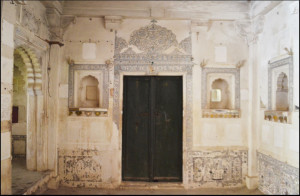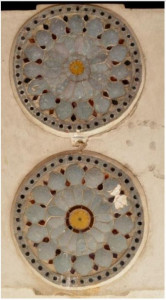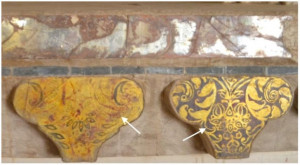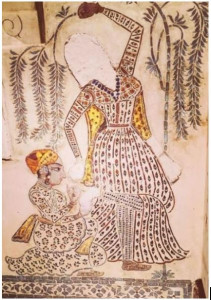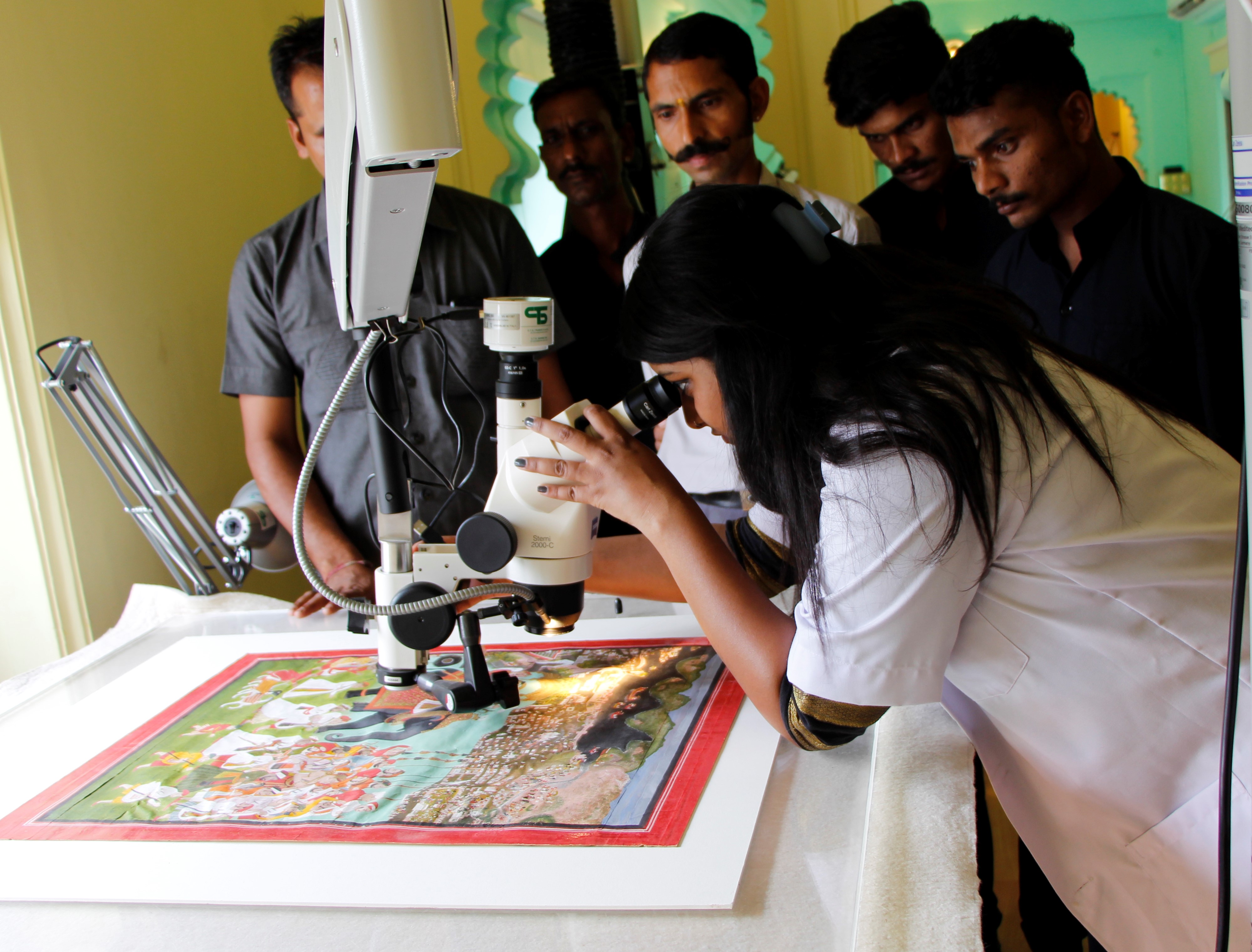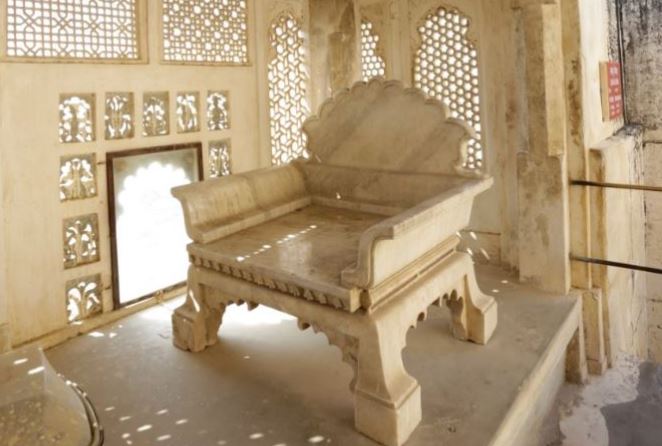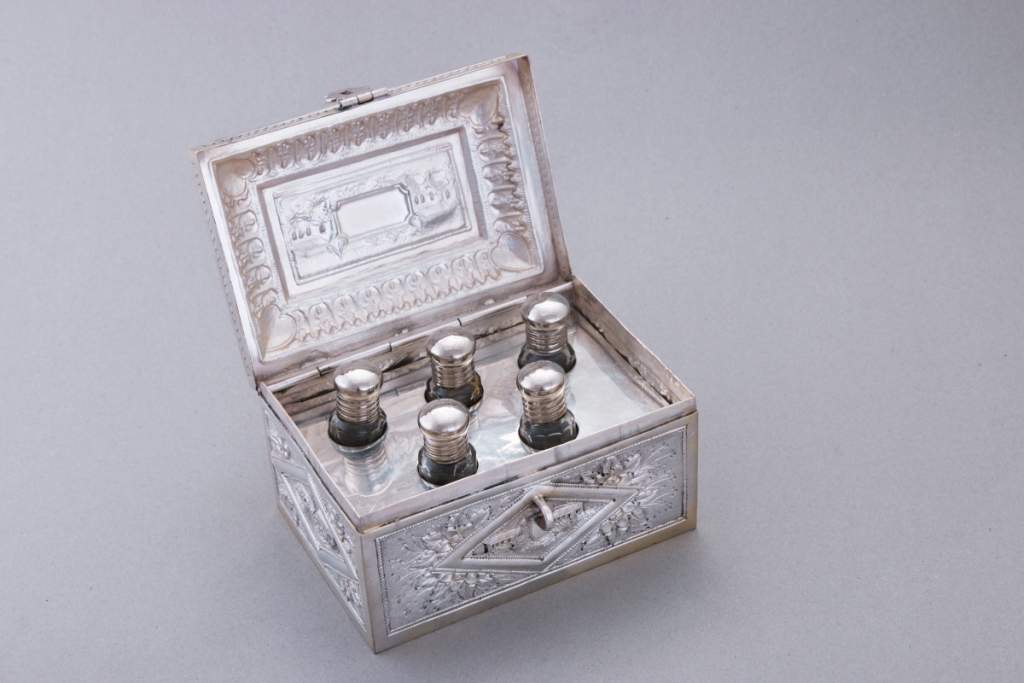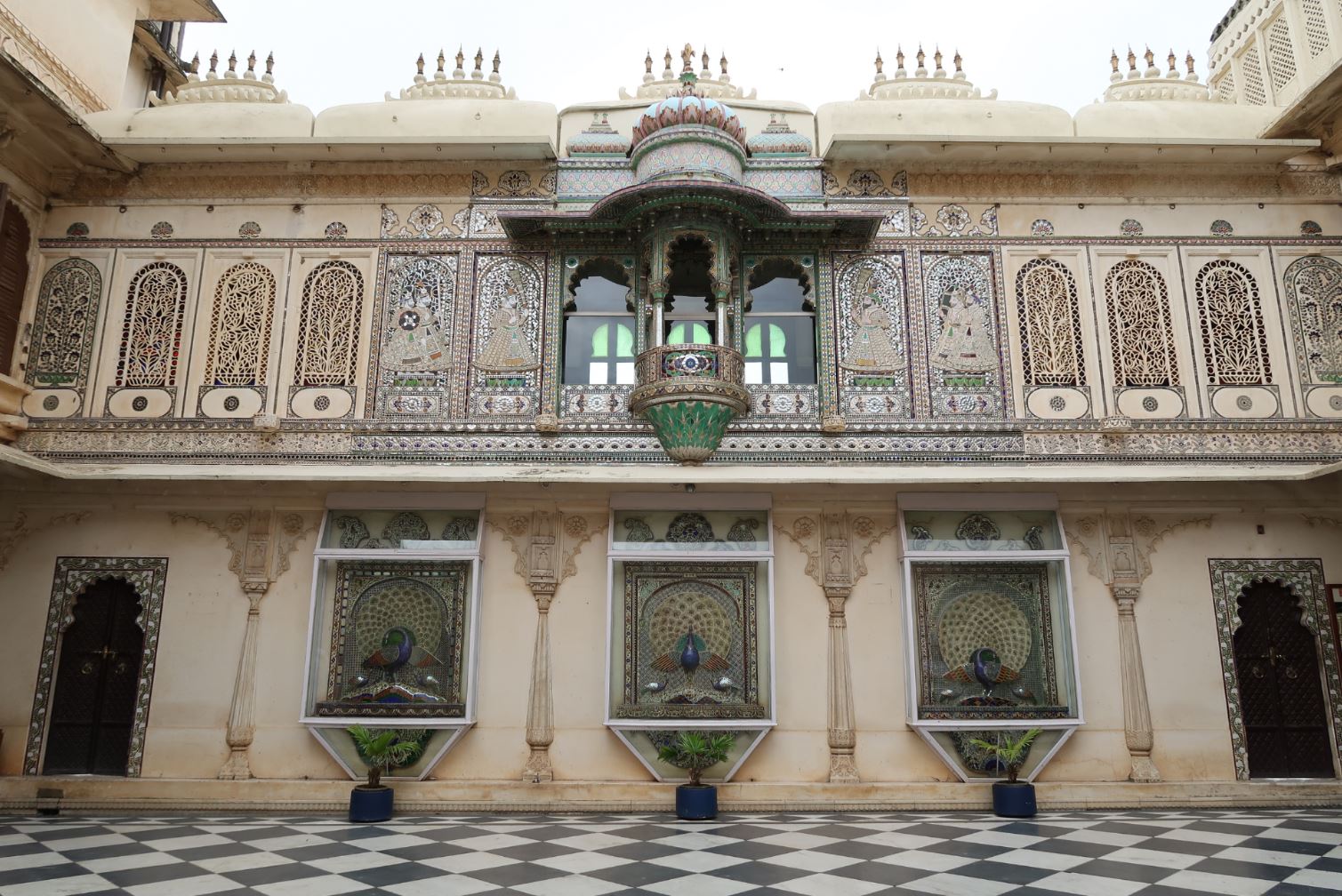
‘Conserving the Osara’
Posted by Admin on Friday, August 14th, 2020
It is rare that one has been untouched by the beautiful architecture and spaces of the City Palace, Udaipur. Contributing to its artistic excellence is the Osara, an area earmarked for conservation.
Osara, like many extensive private spaces in the palace, is exquisitely decorated, using a glass inlay technique. The area is attributed to Maharana Karan Singh (r. 1620-28 CE) and was possibly used to conduct private ceremonies of the royal family. It is located in the north eastern wing of the Zenana Mahal, and comprises four rooms, of which two rooms are more extensively decorated with glass work.
When the area was opened up, it was infested with bats along with rodents and insects. The glass artwork was barely recognizable, and the salt encrustations made the glass resemble stones. Much of the plaster
was damaged and the glass work dirty.
Being a part of this special project was very exciting, as it involved not just conserving the area, but also understanding the original technique that involved a very delicate glass cutting method, and fitting the glass pieces on wet lime plaster to create beautiful mosaics on the walls.
The use of glass became very prominent in the interiors for decoration in the 19th century. The technique of application of glass on lime plastered walls may have changed, however, the tradition continues till today, and can be found in community housings and temples.
To understand the condition better, this project involved preliminary inspection, visual investigation, photographic recording and assessment of the inlay work through non-invasive techniques. These steps were
important in understanding the history of these rooms, and artwork, and therefore implementing the necessary and appropriate treatments. Upon investigation, it was noticed that several types of glass designs were used to decorate the rooms; glass on metal foil, glass on painted paper, coloured glass, mirrors, etc.
The causes of deterioration included historic water infiltration, dampness and human vandalism. The main concern was the salt encrustations on the glass which differed throughout the rooms. It was observed that it was heavier on those areas with damp stains, confirming that water seepage had led to weak adhesion between different plaster layers and glass pieces. This further led to the efflorescence of calcareous salts on the glass.
Upon inspection of the clogged drainage channel over a few Monsoon seasons, it was realised that there was no active water infiltration and therefore, no active threat to the artworks. Hence, the prime focus at the time was to stop the risk of further deterioration.The detached plaster layers and loose glass pieces were adhered with conservation grade lime based mortar and the efflorescence was cleared with appropriate conservation grade solutions.
The campaign continues to create the space as an accessory to honour the artwork, its artists and make the efforts of its study, in present day accessible, to inspire and serve the community.
*All photographs were taken in visible light, before treatment*
Written by:
– Ms. PM Vasundhara, Lead Conservator

